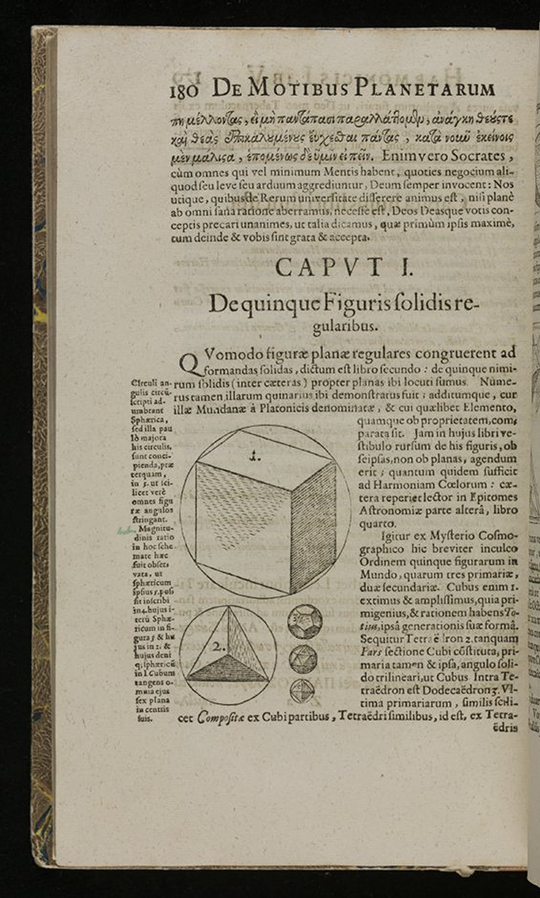- About MAA
- Membership
- MAA Publications
- Periodicals
- Blogs
- MAA Book Series
- MAA Press (an imprint of the AMS)
- MAA Notes
- MAA Reviews
- Mathematical Communication
- Information for Libraries
- Author Resources
- Advertise with MAA
- Meetings
- Competitions
- Programs
- Communities
- MAA Sections
- SIGMAA
- MAA Connect
- Students
- MAA Awards
- Awards Booklets
- Writing Awards
- Teaching Awards
- Service Awards
- Research Awards
- Lecture Awards
- Putnam Competition Individual and Team Winners
- D. E. Shaw Group AMC 8 Awards & Certificates
- Maryam Mirzakhani AMC 10 A Awards & Certificates
- Two Sigma AMC 10 B Awards & Certificates
- Jane Street AMC 12 A Awards & Certificates
- Akamai AMC 12 B Awards & Certificates
- High School Teachers
- News
You are here
Mathematical Treasure: Kepler's Harmonices mundi
Johann Kepler's (1571-1630) search for order in the universe led to his arrangement of the five Platonic Solids as a divine plan for the movement of the planets, a theory which he first articulated in his Mysterium Cosmographicum (1596). In 1619, he provided further explanation and refinement in his Harmonices mundi [Harmony of the Worlds]. The Harmony consisted of five books in which Kepler explored regular polyhedra further, gave the first systematic treatment of tessellations, provided a proof of the existence of only thirteen convex uniform polyhedra, and stated his third law of planetary motion. Images of several pages from this book follow.














The images above are presented courtesy of the History of Science Collections, University of Oklahoma Libraries.
For more images from Kepler's Harmonices mundi, see Mathematical Treasure: Kepler's Harmony of the Worlds.
Frank J. Swetz (Pennsylvania State University), "Mathematical Treasure: Kepler's Harmonices mundi," Convergence (May 2019)




